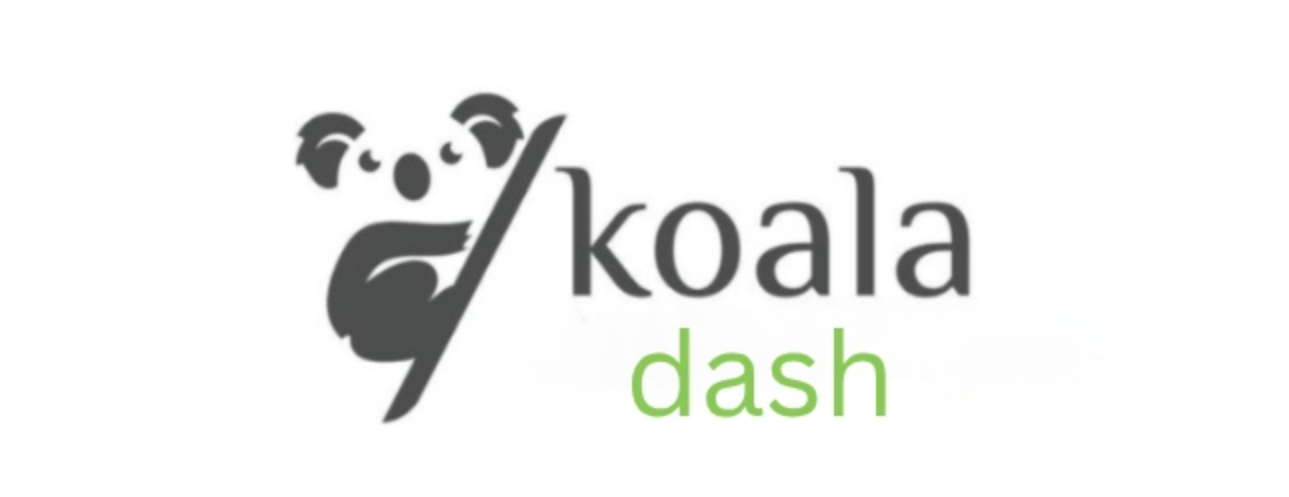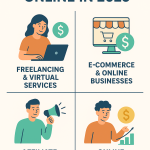If you’re wondering how to use AI in your career—to get promoted faster, earn more, or pivot into a future-proof role—this guide is for you. In 2025, AI in your career isn’t a nice-to-have; it’s the difference between treading water and surging ahead. The data is clear: most knowledge workers already use AI at work, leaders prefer candidates with AI skills, and whole industries are reorganizing around human-AI collaboration. This guide shows exactly how to make AI in your career your advantage: the tools to learn, workflows to copy, pitfalls to avoid, and a step-by-step plan to put AI to work for you today. Azure Asset Storage
Why AI Is Reshaping Careers in 2025
AI adoption is mainstream, not experimental. In 2024, Microsoft and LinkedIn reported that 75% of global knowledge workers use generative AI at work, many bringing their own tools into the workplace. Leaders say their organizations must adopt AI to stay competitive—and are favoring hires with AI skills. Translation: fluency with AI is now a career moat. Azure Asset StorageSource
The economic upside is massive. McKinsey estimates generative AI could add $2.6–$4.4 trillion in value annually across 60+ use cases—boosting the overall impact of AI by 15–40%. PwC’s earlier macro analysis projected $15.7 trillion added to global GDP by 2030. For individual careers, that means more AI-native tasks, roles, and pay premiums for people who can deploy the tech well. McKinsey & Company+1PwC
Jobs aren’t disappearing en masse—but tasks are changing. The IMF notes that around 60% of jobs in advanced economies are exposed to AI; roughly half of those may benefit via productivity gains, while the rest face task displacement and wage pressure without upskilling. That’s your call to action: learn the tools, shape the workflows, and aim for the “benefit” side of that equation. IMF
Skills demand is shifting fast. The World Economic Forum’s Future of Jobs survey (803 companies; 11.3M workers) shows employers expect significant changes in required skills through 2027, with analytical thinking, AI/ML, and creative thinking rising across industries. www3.weforum.orgWorld Economic Forum
Debunking 5 Myths About AI at Work
Myth 1: “AI will replace my job.”
Reality: AI replaces tasks, not whole jobs (for most roles). High-value work—strategy, judgment, creativity, and relationships—remains human. Aim to offload low-leverage tasks to AI so you spend more time on judgment calls and original thinking.
Myth 2: “I need to code to use AI.”
Reality: Most career-boosting tools are no-code: ChatGPT/Copilot for writing, Notion AI for docs, Figma AI for design assists, and low-code automations (Zapier/Make) for workflows.
Myth 3: “AI makes work impersonal.”
Reality: AI frees time for the uniquely human parts—coaching teammates, clarifying priorities, building trust with clients.
Myth 4: “Executives don’t really care about AI skills.”
Reality: Leaders increasingly prefer candidates with AI skills; the 2024 Work Trend Index highlights that tilt explicitly. Azure Asset Storage
Myth 5: “It’s too late to catch up.”
Reality: Adoption is still early in many teams. If you become the person who pilots AI safely and measurably, you become the indispensable multiplier.
The AI Career Value Stack: Where to Focus Your Effort
- Personal Productivity – Use AI to write, summarize, analyze, and prototype quickly.
- Workflow Design – String tools together (prompts + templates + automations) so your output is faster and more consistent.
- Domain Expertise – Layer AI on top of your subject matter: marketing, finance, operations, design, education, healthcare, law, etc.
- Visibility & Trust – Show your team/clients measurable wins; document SOPs; teach others.
- Opportunity Creation – Convert efficiency into growth: better campaigns, more deals, higher-value projects.
How to Use AI in Your Current Job (Field-by-Field Playbooks)
Marketing & Growth
Everyday workflows
- Audience research & insights: Use AI to cluster customer messages/reviews into themes; draft interview guides; extract voice-of-customer phrasing.
- Messaging & creative: Draft 1–3 variants per persona; ask AI to generate counter-arguments, objections, and FAQ answers.
- SEO & content: Topic clustering, briefs, outlines, and first drafts; transform one asset into posts, emails, scripts.
- Attribution & performance notes: Ask AI to summarize analytics dashboards weekly and flag anomalies.
Career lever: Become your team’s “AI content system” owner—templates + QA rules + governance. That’s promotable.
Internal link (if this lives on your site): Explore whether marketing fits you long-term: Digital Marketing as a Career Choice: Is It Right for You?
Sales & Client Services
- Pre-call prep: Have AI summarize the prospect’s site, 10-K/press, and recent interviews into a 1-page brief.
- Call flows & objection handling: Generate talk tracks matched to persona + vertical; keep a living Q&A doc.
- Proposals: Feed discovery notes and ask for a structured proposal with outcomes, timeline, risks, and assumptions.
- CS automation: Draft renewal emails, EBR decks, and risk heatmaps from ticket data.
Product & Operations
- Requirements & specs: Convert stakeholder notes into user stories, acceptance criteria, and edge cases.
- Prioritization memos: Ask AI to structure RICE/ICE comparisons and surface non-obvious tradeoffs.
- Process tuning: Use transcripts and logs to map bottlenecks; propose automations (e.g., intake → triage → routing).
Design & Creative
- Ideation: Prompt mood boards, style alternatives, and copy variants in minutes; then refine as a human.
- Production: Batch-generate social/image variations; draft microcopy; storyboard video sequences.
- Quality control: Ask AI to “critique” against heuristics (contrast, hierarchy, accessibility) and your Brand Book.
HR, L&D, and Leadership
- JD & competency frameworks: Draft role descriptions, skill matrices, and interview rubrics; enforce bias-aware prompts.
- Performance reviews: Summarize wins across tools; generate SMART objectives with metrics.
- Learning paths: Personalized upskilling roadmaps by role and time budget.
Finance & Analytics
- Narratives from numbers: Feed tables/charts and ask for investor-ready commentary; request alt scenarios.
- Controls & ops: Policy drafting; close-checklists; “explain this variance like I’m new to FP&A.”
- Research: Summaries of filings and sector notes with source lists for auditability.
Why this matters: Organizations that embed AI in day-to-day work are already seeing productivity and satisfaction gains; surveys across 31 countries in 2024 show widespread usage and time savings. MicrosoftAzure Asset Storage
Future-Proof Skills for the AI Era
1) AI Literacy (Foundations)
- What LLMs are good/bad at; how to verify output; prompt patterns (role → goal → constraints → examples → format).
- Basic privacy & data-handling hygiene.
2) Prompt Engineering (Practical, not mystical)
- Use role prompts (“You are a… senior product marketer”).
- Provide structured inputs (bullets, tables, labeled sections).
- Ask for reasoning steps and alternatives.
- Demand formats (JSON, tables, slide notes).
- Close with QA instructions (“check for hallucinations; cite any stats”).
3) Data Comfort
- Read and sanity-check charts, trends, and confidence intervals.
- Turn dashboards into decisions with AI-generated “so what?” notes.
4) Synthesis & Storytelling
- AI can draft text; you should decide what matters and how to say it for humans.
5) Collaboration & Leadership
- Run “AI pilots” safely; measure gains; write the SOP; train teammates.
- Coach stakeholders on where AI helps (and where it shouldn’t).
6) Ethics & Risk
- Know the red lines: privacy, bias, plagiarism, IP, and regulatory context.
- Always keep a human in the loop for decisions that affect people.
Your 5-Step Roadmap to Put AI to Work (This Month)
Step 1: Audit your role (30–60 minutes).
List your weekly tasks; mark the repetitive/templatable ones. Those are AI candidates. Star the judgment-heavy tasks you want to protect and amplify.
Step 2: Pick 2–3 high-leverage workflows.
Examples: content briefs → draft → QA; sales research → call outline → follow-up; monthly report → exec summary → slide notes.
Step 3: Build a “minimum viable” AI system.
- Inputs: clear templates (forms, checklists).
- Model prompts: reusable, with example inputs/outputs.
- Post-processing: your rules for formatting and QA.
- Guardrails: what data can/can’t be used; where a human must sign off.
Step 4: Measure impact and document.
Track time saved, cycle time, quality metrics (e.g., approval rate, error rate). Write a one-page SOP with steps, tool links, and risks.
Step 5: Socialize & scale.
Offer a 20-minute lunch-and-learn. Share templates. Gather feedback. This is how “the AI person” gets noticed by leadership.
Why measurement matters: Employers worldwide are reorganizing job ads and skill requirements around AI; early adopters who show quantifiable wins are seeing wage and responsibility premiums. PwC
AI Side Hustles & Entrepreneurial Plays (2025-Ready)
1) AI Content & SEO Studio
Package: research → briefs → drafts → fact-check → publish → repurpose (email, social, short-video scripts). Price on outcomes (traffic/leads), not words.
2) Automation Consulting for SMBs
Most small companies drown in manual admin. Build quick wins (lead routing, proposals, reminders) with no-/low-code tools + AI summarization.
3) Micro-SaaS with AI APIs
Solve a narrow pain (e.g., proposal scoring for agencies, intake triage for clinics). Keep scope tiny; charge monthly.
4) AI Training & Playbooks for Teams
Offer role-specific workshops: “AI for Account Managers,” “AI for Real Estate,” “AI for HR Ops”—with templates and governance baked in.
5) Digital Products
Prompt libraries, SOP packs, analytics story frameworks, creative boards—sell on marketplaces or your site. Bundle with short videos to increase perceived value.
Governance: How to Use AI Safely (and Keep Your Job)
- Data hygiene: Never paste sensitive client or personal data into public tools. Use approved enterprise tools where possible.
- Attribution & citations: For public content, cite stats and sources. Ask AI to provide source candidates, then verify.
- Bias checks: For hiring, funding, or policy content, require human review; ask AI to list possible biases.
- Version control: Save prompts and outputs; keep an audit trail.
- Red-team your own work: Ask AI to critique your output for accuracy, logic gaps, and ethical concerns—then fix them.
Studies & Signals You Can Share with Stakeholders
- Adoption: 75% of knowledge workers use gen-AI; many bring their own tools to work. Leaders believe AI adoption is essential to stay competitive. Use this to justify pilot projects. Azure Asset Storage
- Value creation: Gen-AI could add $2.6–$4.4T annually; overall AI uplift could reach $15.7T by 2030. Use this to argue for AI budget. McKinsey & CompanyPwC
- Exposure vs. opportunity: ~60% of jobs in advanced economies are impacted; about half could see productivity gains if AI is integrated well. Use this to make the case for upskilling. IMF
- Employer demand: Job postings are shifting toward AI skills, and teams that learn to work with AI report time savings and higher satisfaction. Use this to support training programs. PwCMicrosoft
Templates You Can Copy (Plug-and-Play Prompts)
1) Research Synthesis Prompt (Marketing/Strategy)
You are a senior market analyst. Summarize the following customer reviews into 5–7 themes with representative quotes, then propose three testable hypotheses and a 10-question interview script. Output a table with Theme | Evidence | Hypothesis | Interview question.
2) Sales Prep Prompt
You are an enterprise AE. Based on this company’s homepage, press releases, and latest 10-K excerpts (pasted below), create a one-page brief: Company snapshot, 3 strategic priorities, likely pains, 5 discovery questions, and a 60-second opener.
3) Analyst “So-What” Prompt (Finance/Operations)
You are a financial analyst. I’ll paste monthly metrics. Create: (1) 5 bullet insights with magnitude and direction; (2) 3 drivers behind each; (3) recommended actions with owner and timeline; (4) a 100-word exec summary.
4) Editorial QA Prompt
Act as a managing editor. Check the draft for logic errors, unclear claims, and missing citations. List issues in a table with Location | Issue | Fix. Then provide a polished 150-word abstract.
5) Learning Plan Prompt
You are an L&D partner. Based on my role and goals (below), build a 6-week AI upskilling plan with weekly objectives, hands-on tasks, and time estimates (2 hours/week). Include one practical deliverable per week I can show my manager.
Career Pivots Into AI (Without Becoming a Developer)
From Marketer → AI Marketing Lead
- Own the content system (brief → draft → QA → publish).
- Build a brand-safe prompt library and repurposing engine.
- Measure: cost per asset, time-to-publish, organic lift.
From Teacher/Trainer → AI L&D Partner
- Create role-specific curricula; run pilots; capture before/after metrics.
- Package templates and short Looms so busy teams can follow along.
From Operations → AI Workflow Architect
- Map processes; identify repetitive steps; prototype automations.
- Track cycle-time reductions and error rates.
From Freelancer → AI-Powered Studio
- Sell speed and reliability: fixed-scope, template-driven engagements.
- Use AI for research, drafting, formatting—keep human QA for accuracy and voice.
How to Quantify Your AI Impact (So It Shows Up in Reviews)
- Time saved: “Cut campaign brief-to-publish time from 7 days to 48 hours.”
- Quality metrics: “Raised approval-on-first-pass from 42% to 74%.”
- Throughput: “Produced 4x more customer-ready proposals per week.”
- Business outcomes: “Lifted organic traffic +38% QoQ on flat budget.”
- Knowledge sharing: “Led two internal trainings; 30 attendees; 4 teams adopting SOP.”
Attach before/after samples, SOPs, and a one-pager to your performance review.
Common Pitfalls (and Simple Fixes)
- Hallucinations & factual errors → Always verify stats; ask for citations; run a second pass with a “fact-check” prompt and your own review.
- Vague prompts → Provide role, goal, constraints, examples, and desired format.
- Privacy risks → Keep sensitive data out of public tools; use enterprise solutions or redaction.
- Over-automation → Keep humans in the loop for decisions that affect people, money, or compliance.
- Shiny-object syndrome → Start with 2–3 workflows; ship value; then expand.
The Future of AI in Your Career (Beyond 2025)
- Agentic workflows: Teams will orchestrate fleets of AI “agents” that hand tasks to each other (research → draft → QA → publish), supervised by humans for goals and guardrails.
- Personal copilots: Role-tuned assistants trained on your SOPs and assets will accompany every function.
- Skills over roles: Job architectures will emphasize skills matrices and project marketplaces; your AI portfolio will matter more than your title.
- Regulation and trust: Compliance, provenance, and watermarking will mature; people who can ship results and prove safety will advance fastest.
- Human edge: Storytelling, taste, ethics, leadership, and relationship-building become the premium skills that technology can’t replicate.
Want a quick reality check on hype vs. signal? Anchor your business case to reputable research on adoption, value creation, and exposure to AI across economies. Azure Asset StorageMcKinsey & CompanyPwCIMF
One-Week Kickstart Plan (2 Hours/Day)
Day 1: Audit your work; pick 3 AI candidates.
Day 2: Draft prompts + examples; build a checklist for QA.
Day 3: Run 5 trials; save the 2 best prompts; time each run.
Day 4: Package as an SOP; write a 1-page “before/after” memo.
Day 5: Share with your manager; offer to train 2 teammates.
Day 6: Add a simple automation (Zapier/Make) around your best workflow.
Day 7: Capture metrics; propose a 30-day mini-pilot.
Conclusion
AI in your career isn’t about flashy tools—it’s about earning back time, compounding quality, and making room for the work only you can do. The research shows adoption is high, value creation is real, and exposure is widespread. Your move is simple: pick two workflows, build tiny systems around them, measure the impact, and show your work. Do that, and AI stops being a threat—and becomes your superpower. Azure Asset StorageMcKinsey & Company
Extras (optional to include at publish time)
Lead magnet: Offer your prompt pack + SOP template in exchange for email.
FAQ snippets for SEO:
What is AI in your career?
Which AI skills should I learn first?
Do I need to code to benefit from AI?
How do I show AI impact in performance reviews?
Schema (Article/FAQ): Add structured data to improve rich results.
Internal links: Tie to role-specific posts (e.g., AI for Marketers, AI for Sales, AI for Educators) and to Digital Marketing as a Career Choice.



